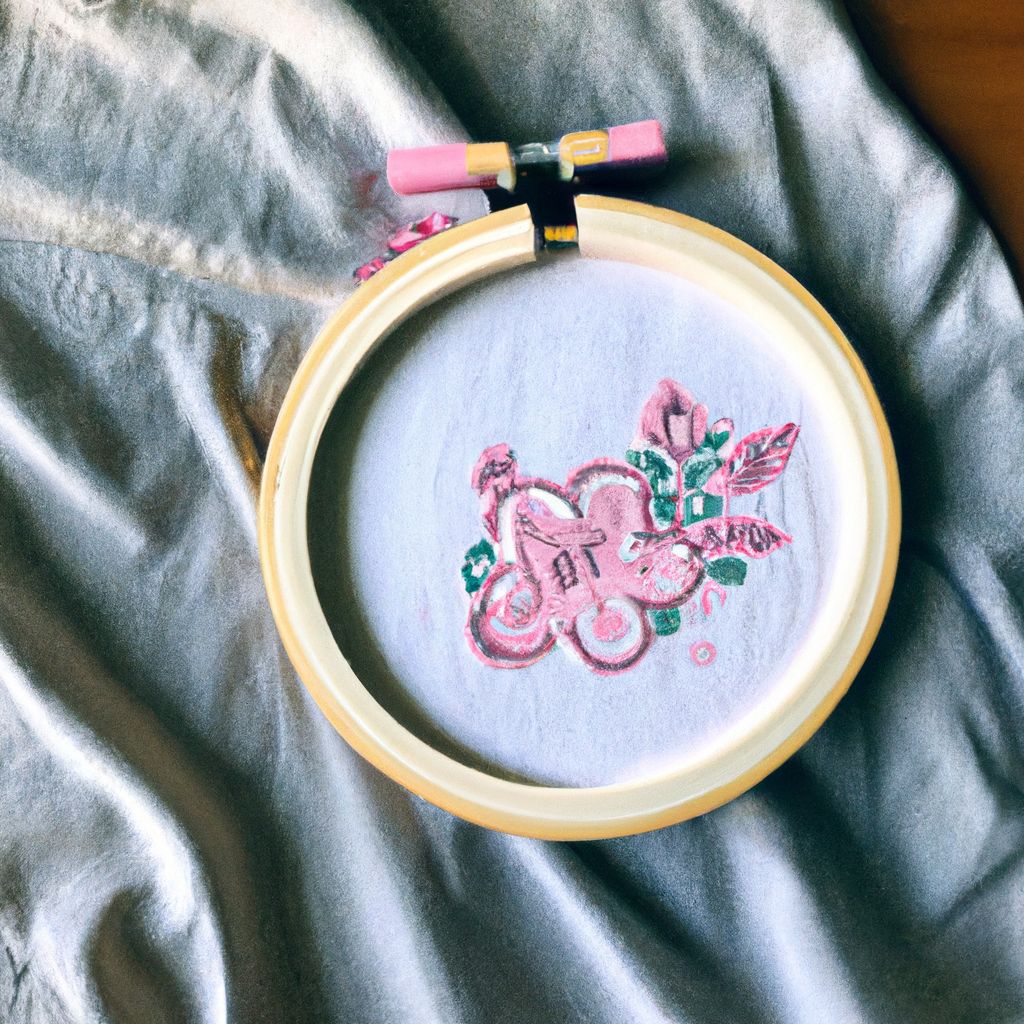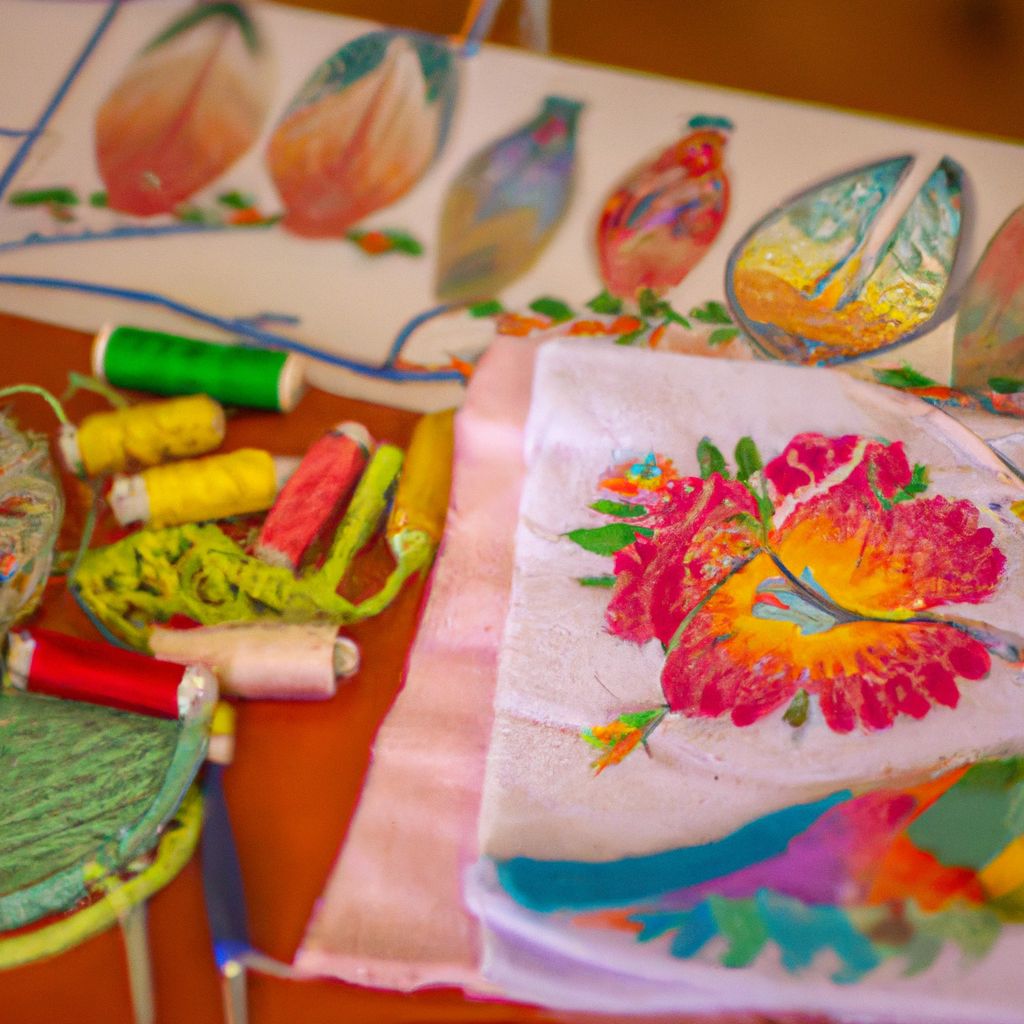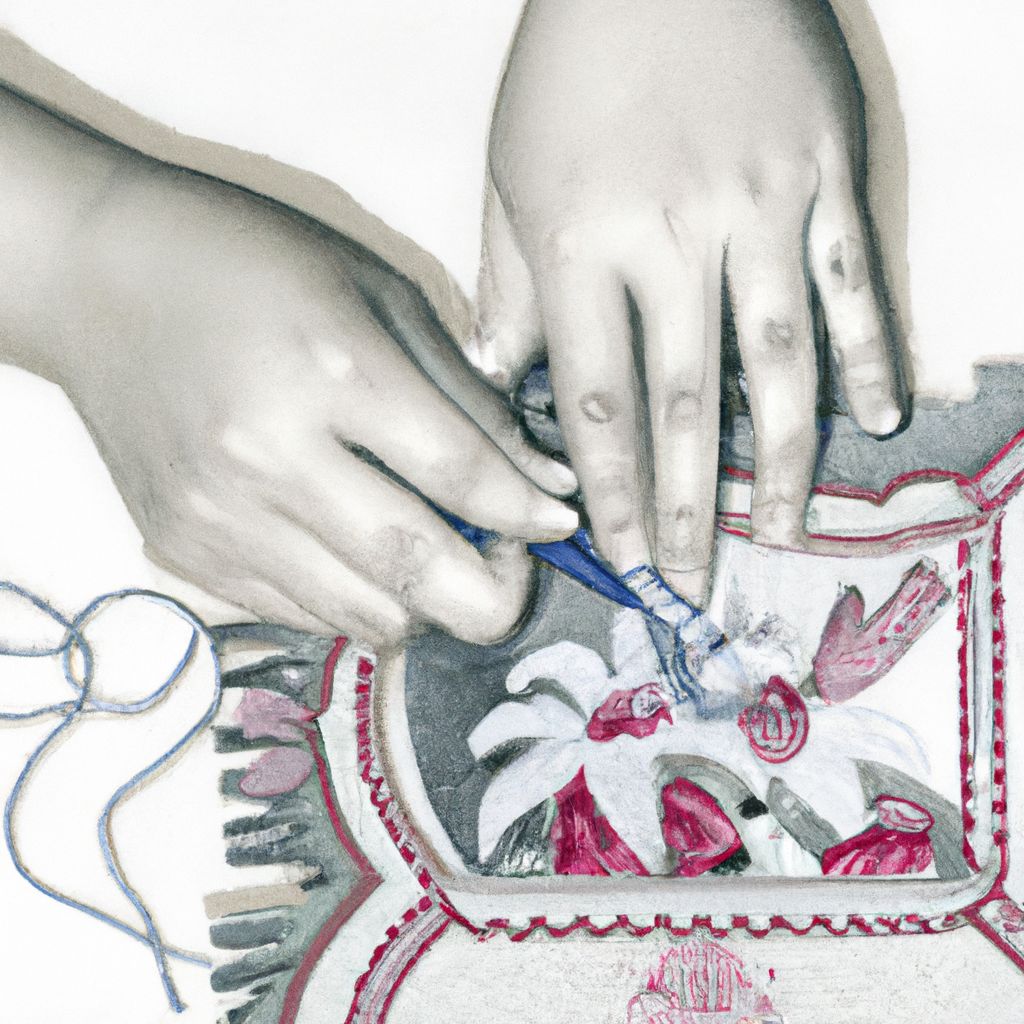- Understanding the Basics of Embroidery
- Market Research and Target Audience
- Crafting a Unique and Marketable Embroidery Style
- Setting Up Your Embroidery Business
- Marketing Strategies for Your Embroidery Business
- Customer Service and Retention Strategies
- Scaling Your Embroidery Business
Understanding the Basics of Embroidery

Embroidery, a timeless form of art, has been a pillar of human creativity and craft for thousands of years. Its rich history, diverse types, and high demand make it a sought-after skill in numerous industries today.
The history of embroidery can be traced back to the Warring States period in China (500-300 BC), where it was used to communicate social status and wealth. Over time, it evolved into a universal skill, practiced all over the world, and adapted to various cultural aesthetics and functionalities.
The types of embroidery are as diverse as the cultures that practice it. They range from Crewel, a style that uses wool and outlines designs with thick, colorful threads, to Blackwork, which utilizes black thread on white fabric to create intricate geometric patterns. Other types include Goldwork, Redwork, Whitework, and Sashiko, each with its unique style and technique.
Today, embroidery is not just an art form but a profitable skill. It's employed in the fashion industry, home décor, personal branding, and more. The global embroidery market size is expected to reach $23.4 billion by 2027, registering a CAGR of 5.7% from 2020 to 2027Research and Markets.
This potential growth signals a great opportunity for individuals skilled in embroidery to turn their passion into a profitable business. Whether it's starting an embroidery shop, selling embroidered goods online, or offering embroidery services, there's a wealth of possibilities to explore.
Market Research and Target Audience

Understanding the embroidery market and its target audience is a crucial step in turning this art into a profitable business. Market analysis helps gauge competition, identify potential customers, and understand their needs and preferences.
As per the Research and Markets report, the embroidery market is growing with a CAGR of 5.7%. This growth implies the presence of substantial competition and opportunities. Key players in the market include apparel manufacturers, home décor companies, and independent crafters. Identifying these competitors and analyzing their strategy and offerings can help you carve a unique place for your business.
Now, let's discuss the target audience. Your potential customers can be anyone who values the beauty and craftsmanship of embroidery. This could range from fashion-conscious consumers looking for unique, embroidered apparel to interior decorators seeking handcrafted home décor items. Other potential customers could be businesses seeking personalized embroidered merchandise.
“Understanding your target audience is crucial to providing products that meet their needs and tastes.”
Consumer preferences in the embroidery market are often dictated by cultural trends, aesthetic appeal, and quality of craftsmanship. Understanding these preferences and staying updated with the latest trends can help you create products that resonate with your audience and stay ahead of competition.
Lastly, it's important to remember that customer needs and preferences can change over time. Regular market research and feedback collection are essential to keep your business agile and responsive to these changes.
Crafting a Unique and Marketable Embroidery Style

In a thriving market like embroidery, crafting a unique and marketable style is essential for standing out. Your style should reflect your creativity, skill, and understanding of customer preferences.
Being innovative is key. Don't be afraid to experiment with different types of embroidery, colors, and designs. A unique style not only attracts attention but also helps establish your brand identity. Customers tend to remember and return to businesses that offer something distinct.
"Innovation distinguishes between a leader and a follower." - Steve Jobs
While innovation is important, so is keeping up with the latest trends. Trends can influence customer preferences, so being aware of them can help you create designs that are in demand. You can keep up with trends by following industry news, subscribing to craft magazines, participating in online embroidery communities, and attending trade shows.
Here are some tips to help craft your unique, marketable embroidery style:
- Experiment: Try different embroidery types, thread colors, fabric types, and design themes.
- Learn: Continually learn and improve your skills. There are many online courses and tutorials available to help you master different techniques.
- Listen: Pay attention to customer feedback. This can provide valuable insights into their preferences and help you improve your offerings.
- Stay Current: Keep up with industry trends and incorporate them into your designs to stay relevant.
Remember, your style should not only be unique but also marketable. It should appeal to your target audience and align with the current market trends.
Setting Up Your Embroidery Business

Setting up an embroidery business involves several steps, from business registration and finding suppliers, to setting up a workspace, pricing your products, and managing finances. Having a solid business plan can guide you through this process and help ensure your venture's success.
A business plan outlines your business goals, target audience, marketing strategy, and financial projections. It's a roadmap for your business and can also be used to secure funding or investors.
- 1. Business Registration:
- Register your business with the local government and obtain necessary permits and licenses. This process varies by location, so it's important to research local regulations. Also, consider legal structures (sole proprietorship, LLC, corporation) to determine which is best for your business.
- 2. Finding Suppliers:
- Identify reliable suppliers for your embroidery materials such as threads, fabrics, and embroidery machines. Look for suppliers who offer high-quality products at competitive prices. Building good relationships with suppliers can lead to better deals and consistent quality.
- 3. Setting Up a Workspace:
- Your workspace should be organized and conducive to productivity. It should have ample space for your embroidery machine, materials, and finished products. Consider investing in good lighting and storage solutions to keep your workspace tidy and efficient.
- 4. Pricing Your Products:
- Pricing should account for materials, labor, overhead costs, and profit margins. Researching what similar products sell for can also help you set competitive prices. Remember, the perceived value of your products can also influence pricing.
- 5. Managing Finances:
- Effective financial management is crucial for business success. Set a budget, keep track of income and expenses, and regularly review your financial performance. Consider hiring a bookkeeper or using accounting software to help manage your finances.
The process of setting up an embroidery business can be challenging, but with a well-thought-out business plan and dedication, it can turn into a profitable venture.
Marketing Strategies for Your Embroidery Business

Marketing is a powerful tool for promoting your embroidery business and attracting customers. It involves both online and offline strategies, each with its unique benefits. Below are some effective strategies for marketing your embroidery business.
1. Online Marketing:
Online marketing leverages the internet to reach a wide audience. Here are some online marketing strategies:
- Website: Having a professional website can improve your business's credibility. It's a platform where you can showcase your products, share your story, and provide contact information.
- Social Media: Platforms like Instagram, Pinterest, and Facebook are ideal for visual businesses like embroidery. They allow you to showcase your work, engage with customers, and build a community. Regularly posting high-quality images of your work and using relevant hashtags can increase your visibility.
- Email Marketing: Collecting email addresses and sending newsletters is a great way to keep customers updated about new products, sales, or events. Ensure your emails provide value to encourage customers to open them.
- SEO: Search engine optimization (SEO) involves optimizing your website so it ranks higher in search engine results. This can increase your visibility and attract more visitors to your website.
2. Offline Marketing:
Offline marketing strategies can be equally effective, especially in local communities. Here are some strategies:
- Networking: Join local business groups, participate in craft fairs, or collaborate with other local businesses to increase your visibility.
- Print Media: Advertise in local newspapers or craft magazines. Distribute flyers or brochures showcasing your work.
- Word of Mouth: Satisfied customers are often happy to refer others. Encourage this by offering a referral program.
Successful marketing involves trying different strategies and seeing what works best for your business. Remember, consistency is key in marketing. Regularly promoting your business can help you build brand recognition and attract more customers.
Customer Service and Retention Strategies

Providing excellent customer service is a crucial aspect of running a successful embroidery business. It not only helps attract customers but also retain them, contributing significantly to your business's profitability.
According to a study by Bain & Company, a 5% increase in customer retention can increase a company's profitability by 25% to 95%. This highlights the importance of focusing on customer retention strategies.
Here are some strategies for providing excellent customer service and retaining customers:
- Quality Products: The quality of your embroidery work is often the first thing customers notice. Ensure your products meet or exceed customer expectations.
- Effective Communication: Communicate clearly and promptly with your customers. Address their questions and concerns swiftly and professionally.
- Personalization: Personalized service can make customers feel valued. This could include personalized product options, packaging, or thank-you notes.
- After-sales Service: After-sales service can include follow-up emails to ensure customer satisfaction, handling returns and exchanges professionally, and addressing any post-purchase concerns.
- Loyalty Programs: Rewarding your loyal customers with discounts, exclusive products, or special offers can encourage repeat business.
Remember, a happy customer is not just a repeat customer but also a potential ambassador for your business. Word-of-mouth referrals from satisfied customers can significantly boost your business's reputation and customer base.
Scaling Your Embroidery Business

Once your embroidery business is up and running, the next step is scaling it up. Scaling involves expanding your operations, increasing production, and potentially moving into new markets. Here are some strategies for scaling your embroidery business:
- Increasing Production: If the demand for your products is high, increasing production can be a viable strategy. This could involve purchasing additional embroidery machines or streamlining your production process for efficiency.
- Hiring More Staff: As your business grows, you may need to hire more staff to handle increased production, customer service, or administrative tasks. Hiring skilled embroiderers can also help improve the quality and variety of your products.
- Expanding Product Lines: Expanding your product line can attract a wider customer base. For example, if you currently only offer embroidered clothing, you could expand into home décor or accessories.
- Moving into New Markets: This could involve selling your products in new locations, such as local retail stores or craft fairs, or expanding your online presence to new platforms or regions.
- Partnering with Other Businesses: Strategic partnerships with businesses that complement yours can help you reach a larger audience. For example, a partnership with a local fashion boutique could expose your products to their customer base.
Remember, scaling should be a gradual process. Taking on too much too quickly can strain your resources and affect product quality. It's important to plan your scaling strategy carefully and ensure your business is ready for the increased demand.








